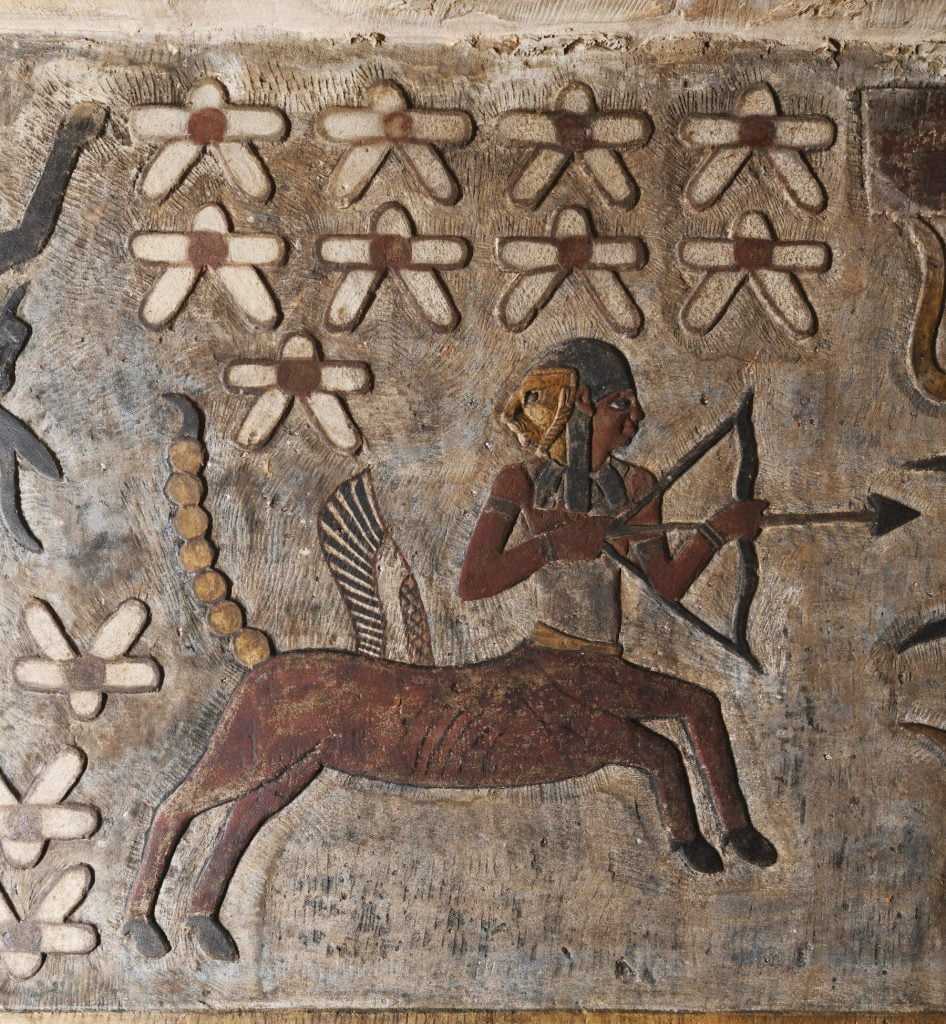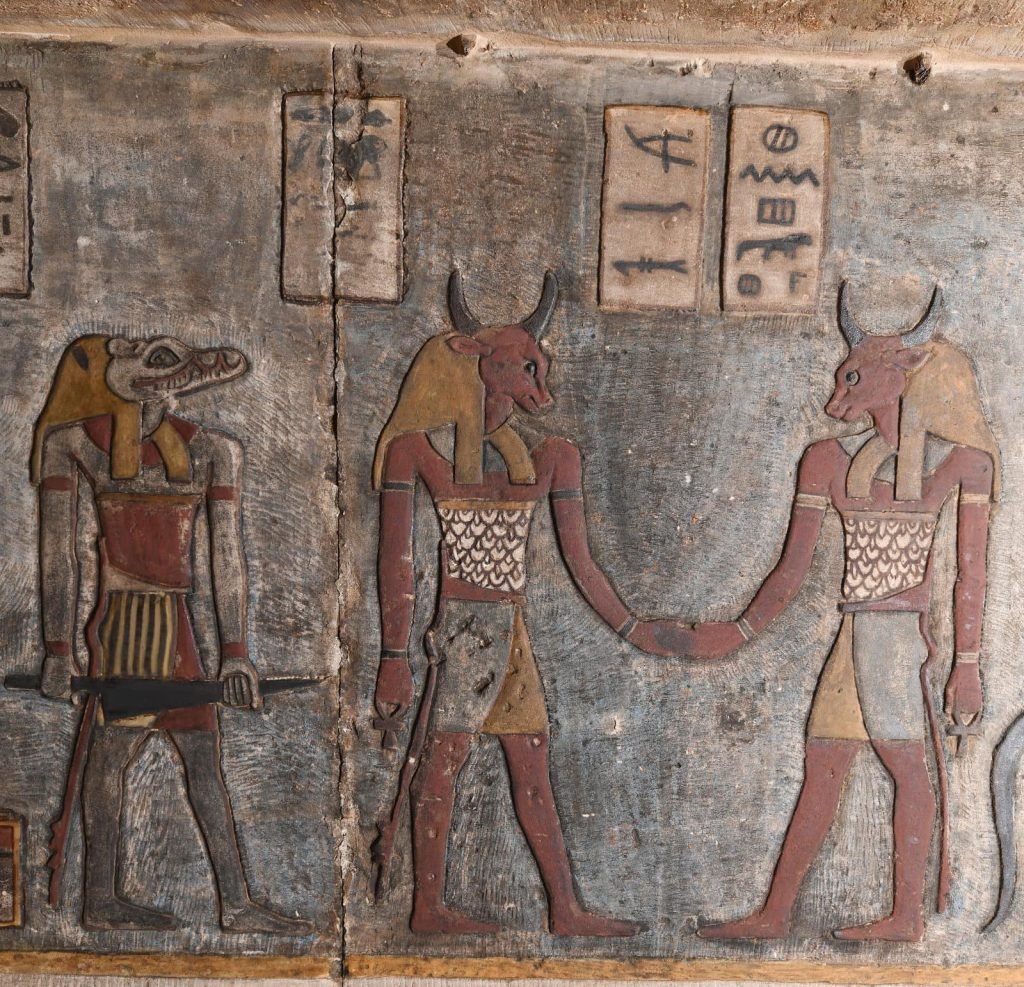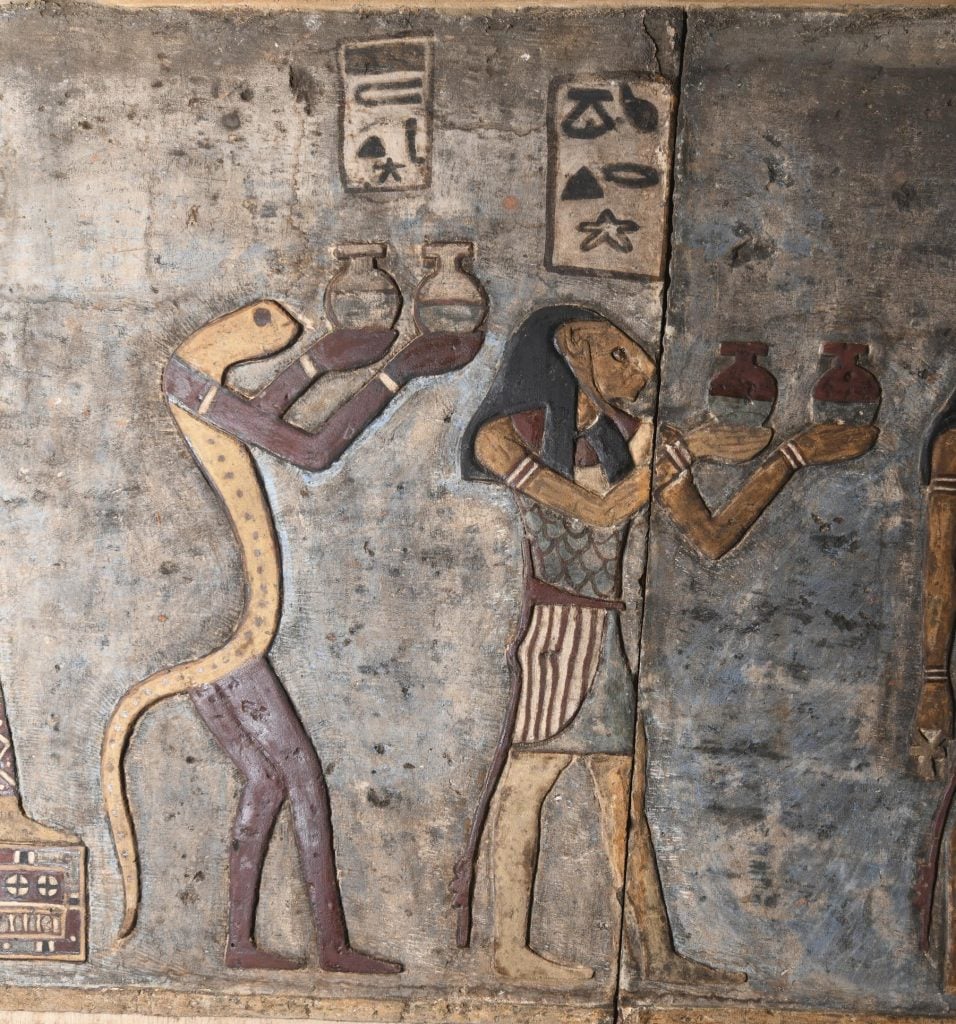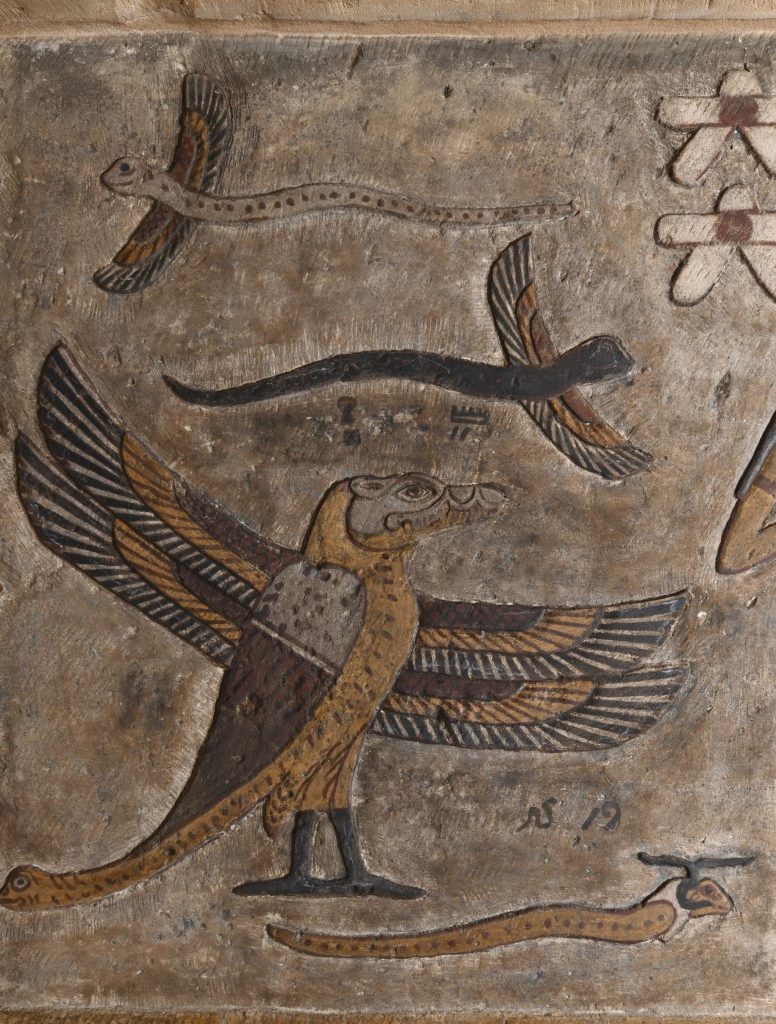Archaeology & History
Extraordinary Ceiling Reliefs Uncovered in an Ancient Egyptian Temple Depict the Zodiac, Planets, and Fantastic Beasts—See Them Here
The reliefs were buried under millennia of dirt, soot, and bird droppings.

The reliefs were buried under millennia of dirt, soot, and bird droppings.

Artnet News

Conservation work on a 2,200-year-old temple in Egypt has uncovered 12 reliefs representing Babylonian zodiac signs, as well as depictions of stars and constellations that the ancients used to measure time.
The images were found carved into the ceiling of the Temple of Esna in Luxor, which was completed around 250 C.E. and dedicated to the Egyptian god of fertility Khnum. They were revealed by a restoration team, made up of archaeologists from the Egyptian Ministry of Tourism and Antiquities and the University of Tübingen in Germany, which cleared away millennia of dirt and bird droppings from the temple’s surfaces to unveil the 12 astrological motifs that are unusual for a site of worship in Egypt.

One of the zodiac signs, depicting Scorpio. Photo: Ahmed Emam / Ministry of Tourism and Antiquities.
“Representations of the zodiac are very rare in Egyptian temples,” said Christian Leitz, a professor at the University of Tübingen, who explained that the Babylonian zodiac was probably introduced to Egypt during Ptolemaic rule between 305 and 30 B.C.E.
“The zodiac was used to decorate private tombs and sarcophagi and was of great importance in astrological texts, such as horoscopes found inscribed on pottery sherds,” added Daniel von Recklinghausen, a Tübingen researcher. “However, it is rare in temple decoration. Apart from Esna, there are only two completely preserved versions left, both from Dendera.”

Representations of decans, zodiac signs used to measure the twelve hours of the night. Photo: Ahmed Emam / Ministry of Tourism and Antiquities.

Representations of decans, zodiac signs used to measure the twelve hours of the night. Photo: Ahmed Emam / Ministry of Tourism and Antiquities.
Zodiac signs aside, the restoration effort further unearthed a trove of other reliefs, including illustrations of the planets Jupiter, Saturn, and Mars.
A host of deities and fantastical animals were also found, such as a snake with a ram’s head, a bird with a crocodile’s head, and yet another snake with four wings.

Depiction of winged snakes and an animal with bird, crocodile and snake features. Photo: Ahmed Emam / Ministry of Tourism and Antiquities.
Additionally, researchers discovered some previously unknown inscriptions, which had been covered by soot and inadvertently preserved. Analysis is currently being carried out on these new finds.
Restoration on the Temple of Esna began in 2018, and has involved the cleaning and recoloring of the monument’s surfaces. Along the way, the team has logged finds including a colorful fresco made up of 46 depictions of Egyptian goddesses Nekhbet and Wadjet, as well as painted inscriptions that detail royal titles and caption the constellations carved into the temple’s ceiling.